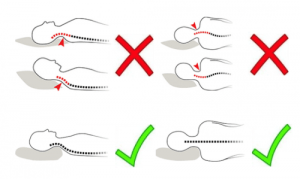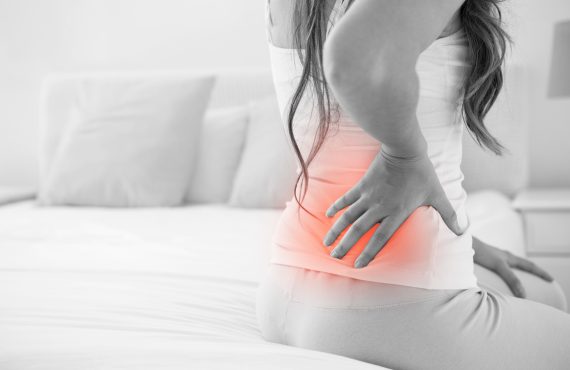Did you know 71% of adults will experience neck pain at some point in their lifetime?
Do you wake up with neck pain following sleep?
Poor pillow support during sleep can be a cause of neck pain, stiffness, and headaches. These symptoms can continue to persist and nag you unless your pillow situation is addressed. Everyone has different sleeping habits and pillow preferences. People may have personal preferences for certain brands, materials, and shapes. However, I think we can all agree that having a pillow that properly supports the natural curvature of the neck for comfort is key. The dimensions of the pillow is essential in optimizing spinal alignment.
A pillow that is too thin or low can cause the neck to “droop” or curve downwards. The opposite is also true. If a pillow is too thick or high, it will cause the neck to “hike” or curve upwards. Both scenarios would apply addition pressure and stress on the neck. During sleep we tend to hold these neck postures for extended periods and sometimes hours on end. This can eventually lead to neck related issues. The pillow height is a crucial factor when choosing the right pillow.
Choosing a Pillow Best For You
It is important to remember that your sleep position plays a role in the pillow selection process. The ideal pillow will depend whether you are a side, back or front sleeper. Your pillow support requirement will vary according to your sleep position. It would be impractical to switch neck pillows throughout the night as you toss and turn. Instead, it is recommended that you identify the position you spend most of the night in when determining the best pillow for you. Just like shopping for a new mattress, it is important to try different types of pillows. If possible, I would suggest to try out the pillows on your own mattress before you make your final decision. The surface in which you use the pillow on will make a difference (i.e.the floor or firm/medium/soft mattress). Using a mirror or asking someone to observe you while lying on the pillow can be helpful to ensure your neck and upper back are in a straight line for proper alignment.
Taking into consideration of these suggestions will help you have better comfort for sleep and reduce the likelihood of pillow related neck pain.
Dr. Truong’s Additional Tips
If you are experiencing hip pain and are a side sleeper, putting a pillow between the knee cal help to alleviate additional pressure on your hips and lower back.
Bring your pillow from home with you when you travel. It is unlikely that the pillows that are provided in hotels or a guest room will be perfect for you.
For long plane flights or car rides bring a travel pillow for your neck. Take the pressure off your postural neck muscles while travelling.
Here is a helpful picture from https://thedozyowl.co.uk/neck-pain-pillow/ that depicts the points I discussed on this topic:






